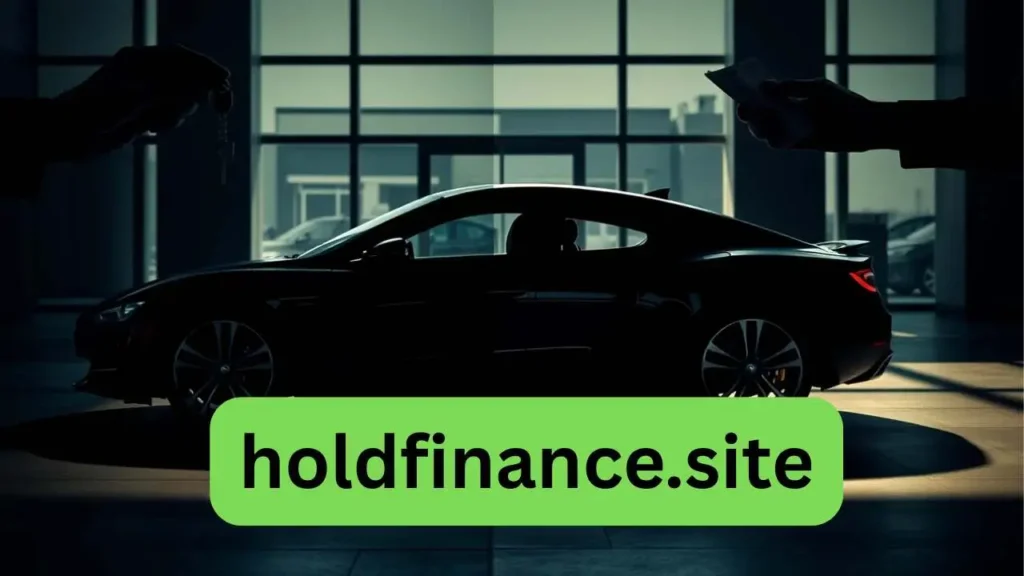Thinking about trading in your car but still making payments on it? You’re not stuck—there are options. Whether you’re upgrading to a newer ride or just changing gears, this guide breaks down everything you need to know about trading in a financed car, step by step. Let’s clear up the confusion and help you make the smartest move for your money.
Table of Contents
Can You Trade in a Financed Car?
Brief Overview
Have you ever considered trading your car in, only to find out that you still have a loan balance? You are not by yourself. There are countless individuals stuck in this exact scenario, thinking if it is even possible.
Why This Topic Matters
Trade in a financed car can seem like juggling flaming swords—confusing, risky, and intimidating. Although that may be the case for some people; being aware of all your options can help ease you of the burden.
Understanding Car Financing
What Does “Trade in a Financed Car” Mean?
Trade in A financed car means you’ve taken out a loan to buy it. You make monthly payments until the loan is fully paid off. Your car is officially owned by the lender until that time.
How Auto Loans Work
In the case of getting a car loan, the lender effectively pays the dealership on your behalf, thus putting you in debt. You repay the lender in monthly installments—usually with interest—over a set period, like 60 months. In most cases, the lender puts the funded amount in a car loan account marked against your name.
What Happens When You Still Owe Money?
If you haven’t paid off the loan and you want to trade in the car, the remaining balance still matters. The dealer has to take this into account during the trade-in process.
Can a Vehicle Be Trade in a Financed Car?
Yes – But with Conditions
Yes, an automobile with an outstanding loan can be traded in. However, whether you have positive or negative equity has a significant impact on the process.
What the Dealership Does with Your Loan
The dealership usually pays off the remaining loan balance as part of the transaction. They subtract what you owe from your car’s trade-in value and apply the difference toward your next vehicle.
Types of Auto Loan Situations
Positive Equity Explained
Once you pay off your debt on the car loan, there is a positive equity. Assume you have 5,000inequityandtheloanbalanceis5,000inequityandtheloanbalanceis15,000, thus the value of your car is $10,000.
Negative Equity Explained
As an example, if the car’s value is 10,000andthetotalcostincurredis10,000andthetotalcostincurredis13,000; therefore, in this scenario, there is no equity in the car purchased. Negative equity can also be stated as ‘being upside down’ on your loan.
This means you owe more than what the vehicle is worth.
In this case there’s 3K in negative equity.
How Each Affects a Trade In a Financed Car
Positive equity is great—it can be used toward your next purchase. Negative equity complicates things, but you still have options.

Trade In a Financed Car with Positive Equity
A Simple Transaction
With positive equity, the process is straightforward. Your loan is paid off by the dealership, which then applies the remaining funds to your new vehicle.
Using Equity as a Down Payment
That extra value can serve as a down payment on your next car, reducing your future monthly payments.
Trade In a Financed Car with Negative Equity
What Happens When You Owe More Than It’s Worth?
This is trickier. The dealer still pays off the loan, but the difference rolls into your new loan or has to be paid upfront.
Rolling Over Negative Equity
You can roll over the negative equity into your new loan at some dealerships. But this means you’ll start out owing more than your new car is worth. Be careful—it’s a debt snowball waiting to happen.
Paying the Difference Out of Pocket
It is preferable to pay the difference out of pocket if at all possible. It keeps your new loan more manageable and avoids deeper debt.
Step-by-Step: How to Trade in a Financed Car
Step 1: Check Your Loan Balance
To determine your precise payoff amount, give your lender a call or access your account online.
Step 2: Get Your Car’s Trade-In Value
To obtain an estimate, use resources like as Edmunds or the Kelley Blue Book. Dealers often offer less than retail, so be prepared.
Step 3: Calculate Equity
Subtract your loan balance from your car’s trade-in value to see if you have positive or negative equity.
Step 4: Shop Around for Deals
Different dealers offer different trade-in values. Shop wisely and don’t take the first offer you receive.
Step 5: Negotiate the Trade In a Financed Car
Don’t be shy about negotiating. The better your trade-in value, the better your next loan terms can be.
Benefits and Drawbacks of Buying a Financed Vehicle
Pros
- Convenient and fast
- May lower your next car’s cost
- Dealer handles loan payoff
Cons
- You could roll over negative equity
- Dealers may undervalue your car
- Higher monthly payments if not careful
Alternatives to Trade In a Financed Car
Sell the Car Privately
Private sales usually fetch higher prices than trade-ins. You’ll still need to pay off the loan, but you might get more money.
Pay Off the Loan First
Before trading in, pay off the loan if you can. That way, you’ll have full equity.
Refinance the Auto Loan
Lower your interest rate or extend the term to ease payments—then trade in later when you have better equity.
Tips to Maximize Your Trade-In Value
Clean and Repair Your Vehicle
First impressions matter. A clean, well-maintained car gets better offers.
Keep Maintenance Records
Show you’ve taken care of the vehicle—it builds trust and justifies a higher offer.
Get Multiple Offers
Don’t settle. Shop around at different dealerships and use offers to your advantage.
Mistakes to Avoid
Not Knowing Your Car’s Value
Always do your research. Walk in informed to avoid lowball offers.
Ignoring Your Payoff Amount
Know your exact loan balance. This is essential to calculate equity.
Rushing Into a Deal
Take your time. Treat trading like a major financial decision.
How Lenders and Dealers Handle Financed Trade-Ins
Paying Off the Loan
The dealer typically pays off your loan directly to your lender. You’ll receive paperwork showing the transaction.
Transferring Title
Ownership cannot be transferred until the loan is repaid. This is taken care of by the dealership as part of the trade-in procedure.
Dealer Incentives
Some dealers offer trade-in bonuses or promotions—ask around. It could just make the difference for you.
What Happens to Your Credit Score?
Potential Impacts of Trading In
A trade-in itself doesn’t hurt your credit. But taking on a new loan, especially a bigger one, could temporarily lower your score.
Managing Payments and Credit History
Make payments on time, and keep an eye on your credit report. Responsible actions can build your score even after a trade.

Solutions for Trade in a Financed Car
So, you want out of your current car loan — now what? Here are the top solutions that actually work when you’re trying to trade in a car that still has money owed on it.
1. Use Positive Equity to Your Advantage
You’re in a terrific place if the value of your car exceeds the amount of your outstanding loan. This equity can be applied as a down payment on your next car. It’s the smoothest and most cost-effective way to trade in.
For instance, your car is worth $10,000 and you owe $7,000.. That $3,000 can lower your next car’s price or monthly payments.
2. Roll Over Negative Equity (Cautiously)
When your loan balance is higher than the car’s value, you’re dealing with negative equity. One solution is to roll over that difference into a new loan.
Heads-up: You’ll be starting your next loan upside down too. Only do this if absolutely necessary and if you’re getting a better, more reliable vehicle.
3. Pay the Difference Out of Pocket
If you can swing it, pay the difference between your loan balance and your car’s trade-in value upfront. This keeps your new loan clean and manageable.
Example: You owe $12,000, but the car is only worth $9,000. Pay the $3,000 yourself and start your new loan fresh.
4. Refinance Before Trading In
If you’re underwater on your loan, refinancing might help. A better interest rate or longer term could lower your monthly payments and help you build equity over time before you trade in.
5. Sell the Car Privately
Private buyers usually pay more than dealerships. Sell the car yourself, pay off the loan with the proceeds, and if there’s any cash left, it goes straight into your next car purchase.
Pro Tip: To ensure a smooth title transfer, make sure you work with the lender.
6. Wait and Pay Down the Loan
Sometimes the smartest move is patience. Wait a bit longer, keep making payments, and trade in once your equity situation improves.
FAQs
1. Can you trade in a financed car with bad credit?
Yes, but it may affect the interest rate on your new loan. Your credit score is still very important.
2. What if I owe more than the value of my trade-in?
That’s negative equity. You can roll it into your new loan or pay the difference upfront.
3. Do I need to tell the dealer my car is financed?
Absolutely. They need that info to pay off your loan and handle the paperwork.
4. Is it possible to exchange my vehicle for another dealership?
Yes. You’re not locked in. Shop around for the best trade-in value.
5. How quickly can a financed vehicle be traded in?
Anytime, however in order to prevent additional expenses, it is preferable to wait until you have positive equity.
Final Thoughts
Indeed, trading in a car which is under financing is possible, and depending on your equity situation, it can be a good decision. As with any transaction, knowing your loan and value of the car and not hurrying up the process goes a long way. Deciding whether to upgrade or simply change your current car, being calm and well informed is critical.
Read More:
Best In-House Car Financing Near Me 2025
How Top Free Personal Finance Software 2025